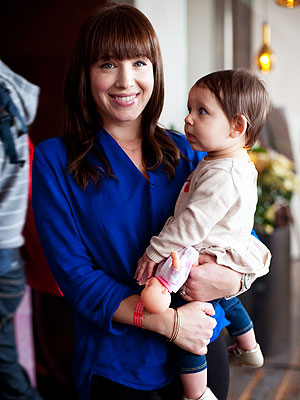NEW YORK (Reuters) - Stocks finished slightly lower in a quiet session on Tuesday as the back-and-forth wrangling over the "fiscal cliff" gave investors little reason to act.
Trading volume was light as legislators continue to negotiate a deal to avoid a $600 billion package of tax hikes and federal spending cuts that would begin January 1 and could push the economy into recession.
Just 5.86 billion shares changed hands on the New York Stock Exchange, the Nasdaq and the NYSE MKT, below the year's daily average of 6.48 billion shares.
A key measure of investor anxiety has remained muted. The CBOE Volatility Index or VIX <.vix>, a gauge of market anxiety, was at 17.12, up 2.9 percent. It has not traded above 20 since July.
Optimism for progress was dented after remarks by President Barack Obama, who rejected a Republican proposal to resolve the crisis as "out of balance" and said any deal must include a rise in income tax rates on the wealthiest Americans.
"People don't know if what's going on is political posturing or real negotiations that represent progress," said Bernard Baumohl, managing director and chief global economist at the Economic Outlook Group in Princeton, New Jersey.
Expectations of higher taxes on dividends beginning in 2013 have pushed many companies to pay special dividends this year or advance their next payback to investors. Coach
One of the S&P 500's top sectors for the day was health care <.gspa>, considered a defensive group.
The Dow Jones industrial average <.dji> fell 13.82 points, or 0.11 percent, to 12,951.78 at the close. The Standard & Poor's 500 Index <.spx> dipped 2.41 points, or 0.17 percent, to 1,407.05. The Nasdaq Composite Index <.ixic> shed 5.51 points, or 0.18 percent, to close at 2,996.69.
The market has been sensitive to rhetoric from Washington, as a failure to reach an agreement could send the U.S. economy back into recession. Still, many expect a resolution to be found, which could extend the S&P 500's rally of 12 percent so far this year.
Differences within the Republican Party came to the fore on Tuesday as one senator opposed to raising taxes lashed out at Republican House Speaker John Boehner for proposing to increase revenue by closing some tax loopholes.
Congressional Republicans recently proposed steep spending cuts to bring down the budget deficit, but gave no ground on Obama's call to raise tax rates on the rich. The proposal was quickly dismissed by the White House.
"We're on hold trying to figure it out, but investors are stressed since they have to make decisions soon about how to proceed with their investments if taxes are indeed going up. We could see a real pick-up in volume over the next week or so," Baumohl said.
Netflix Inc
Intel Corp
Darden Restaurants Inc
In contrast, Big Lots Inc
MetroPCS Communications
Almost half of the stocks traded on the New York Stock Exchange closed lower, while 50 percent of Nasdaq-listed shares closed in negative territory.
After the closing bell, Pandora Media Inc
(Editing by Jan Paschal)
























